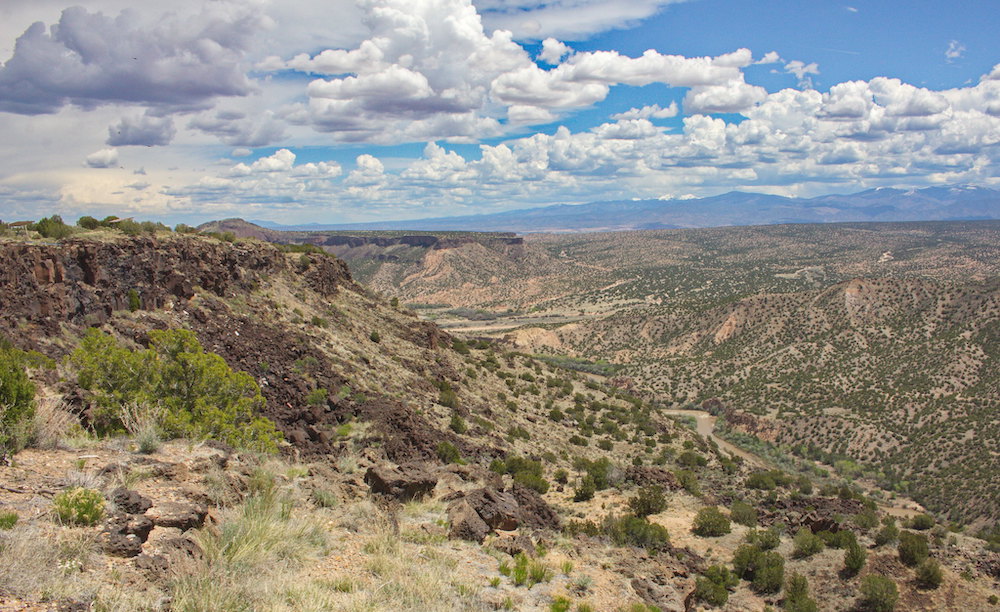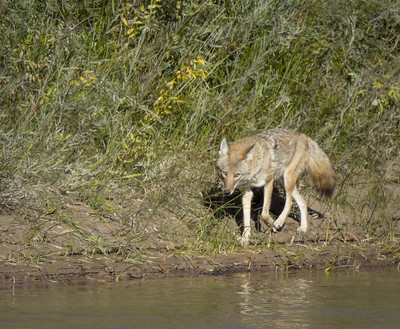
During week nine of Take It Outside, we are learning about our climate!
Here in Northern New Mexico, we have a challenging climate for life that includes variable precipitation, strong sun exposure, and large temperature swings. Learn more about our local climate, the factors that control it, and the organisms that are adapted to survive here in today’s post.
Blog Post:
PEEC founder and volunteer Chick Keller discusses our local climate in New Mexico, as well as how we can expect it to change with anthropogenic climate change. Read today’s blog post here.
Craft and Outdoor Challenge (Beginner):
The Southwest has a unique climate that supports a diverse ecosystem. Learn more about the difference between weather and climate here. Each species that lives here is adapted to survive our harsh, dry climate.
Make a collage to celebrate all the plant and animal species that make the Southwest a beautiful place to call home! Start by going on a nature walk. Observe and collect different natural things you find along the way. When you get home, make a collage with your collection! Share it with us by emailing takeitoutside@peecnature.org or by tagging us on Facebook or Instagram.
Outdoor Challenge (Advanced):

Examine some of the specific adaptations that allow organisms to live in our climate. Some of the conditions present in our climate include dry air, large seasonal and daily temperature variations, bright sun, strong winds, and low moisture.
For plants, you might notice:
- Small leaves have less surface area to preserve moisture. A trade-off is that they can’t produce as much sugar for the plant to grow.
- Narrow, upright leaves don’t shred easily in high winds.
- Hairy or fuzzy leaves can trap moisture near the surface of the plant to insulate it from temperature variations.
- Waxy leaves can help keep moisture from evaporating, and reflect some sunlight.
- Succulents have shallow root systems and water-storage capacity in their leaves and stems that allow them to thrive during infrequent rains.
For animals, you might notice:
- Burrowing in the ground allows many species to shelter against large temperature variations.
- Some animals find hospitable microclimates, like shady spots under rocks or trees, or gravitate toward riparian areas, to take advantage of the variations in our landscape.
- Some animals shed their thick winter coats for summer. The Abert’s squirrel has a thinner coat and smaller ear tufts in the summer than in winter.
- Birds can dilate blood vessels in their legs to transfer heat out of their blood to the environment.
- Some animals, like pocket mice, do not need to drink water, and get all of their needed water as a byproduct of metabolizing food. Others, like packrats, eat juicy critters and plants for water. Still others, like coyotes, need access to fresh water.
Other Resources:
- The Arizona-Sonora Desert Museum has a bit of a different climate and ecosystem than ours here in Northern New Mexico, but the organisms that live in the Sonora Desert have similar adaptations to their dry climate. Find out more here.
- Learn more about the plants and animals of the American Southwest from the National Park Service.
- If you’d like to explore how birds could be impacted by climate change, check out the National Audubon Society’s Survival by Degrees project.
Share Your Experience:
Tell us what you learn about our climate this week! We’d love to see your photos, too. Please send them to takeitoutside@peecnature.org or share them on Facebook or Instagram with the hashtag #peectakeitoutside.
Join us tomorrow to learn about paleoclimates of New Mexico!
